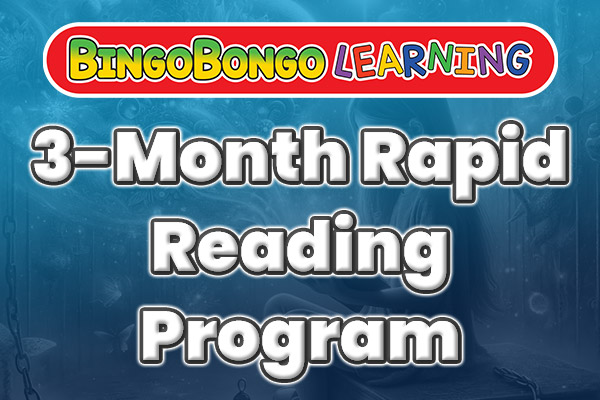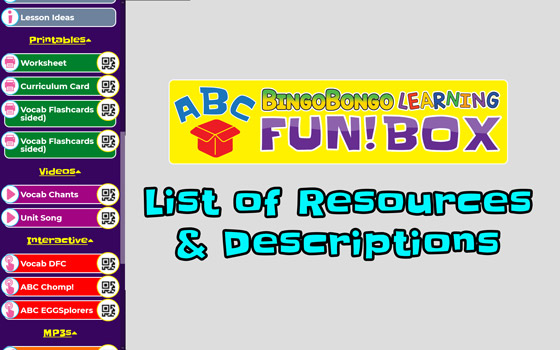 Should I teach English lessons to improve test scores, speaking ability, or both?
Should I teach English lessons to improve test scores, speaking ability, or both?
Today we’re going to dive into a topic that is often discussed and debated by language school owners and people in the field of ESL/EFL English education. The main questions are how much of your English lessons should you focus on verbal communication, and how much should you focus on reading and writing? In addition, since standardized English proficiency tests are a popular way of evaluating a student’s ability to read and write, we should also think about the following questions:
1. Should young students be encouraged to take standardized English tests such as EIKEN, TOEIC, TOEFL, and GTeC to name a few?
2. If so, at what age should students begin studying and preparing for these standardized English tests in Japan?
These are all important question to consider when planning to start a new language school or eikaiwa school (in Japan), and if you search the internet or look at popular trends in English education, you’ll find that there are a wide array of differing opinions regarding the answers.

If you’re planning to start a language school or eikaiwa in Japan, or you’ve recently started one, it’s recommended to carefully think about your approach to the verbal communication vs. written communication (and testing) debate, since it will play an important role in the development of your school’s curriculum as well as impact the kinds of students who choose to sign-up and study with you. The better you understand the needs of your students and the expectations of their parents, the more successful you’ll be in delivering a high quality product that will lead to increased word-of-mouth marketing to grow your school.
Before I discuss these questions and the solutions I have put into practice in my school, Step by Step Eikaiwa, I will talk about some relevant issues related to English education for young children in Japan. Please keep in mind that I will be focusing on eikaiwa-style lessons and not international kindergarten or juku-style lessons (cram school). Eikaiwa-style lessons are usually smaller classes (3 – 8 students) which are taught once per week (45 – 60 minutes).
Understanding English Education in the Japanese Public School System
 Japanese students typically study English for eight years by the time they graduate from high school in Japan. There have also been major changes from the Ministry of Education to start English education at younger ages for elementary school students. This means that students will have 10+ years experience studying English once they finish high school. You would think that this would provide a solid foundation for the ability to speak English, but that’s not what the research shows. Japan still ranks 49th with “low proficiency” in the EF proficiency rankings.
Japanese students typically study English for eight years by the time they graduate from high school in Japan. There have also been major changes from the Ministry of Education to start English education at younger ages for elementary school students. This means that students will have 10+ years experience studying English once they finish high school. You would think that this would provide a solid foundation for the ability to speak English, but that’s not what the research shows. Japan still ranks 49th with “low proficiency” in the EF proficiency rankings.
Having lived in Japan for over 13 years, I’ve also found that the further I go from the cities in Japan, the less and less people are able to communicate confidently in English. Another surprising thing I’ve personally noticed is that many people I’ve met in Japan can read and write English with a greater level of confidence than they can speak. So what is the reason for the lack of ability in verbal communication, yet having confidence in their written communication? To understand the answer, we need to dig a little deeper into the role that testing plays in the education system and the way standardized English tests are used for entrance into high schools and universities.
The Popularity of Standardized Tests in Japan
 Without a doubt in my mind, the prevalence of tests in the English education system in Japan is one of the greatest reasons contribute to the low ranking of English speaking ability among Japanese citizens. Standardized English tests typically focus on reading and grammar comprehension. Some tests have a listening component, but a speaking/interview component is rare, especially in elementary school through high school. If students are going to study English, it only seems obvious that they would get plenty of experience with English conversation and verbal communication, right? After all, “eikaiwa” literally means “English conversation.” Unfortunately, this isn’t necessarily the case.
Without a doubt in my mind, the prevalence of tests in the English education system in Japan is one of the greatest reasons contribute to the low ranking of English speaking ability among Japanese citizens. Standardized English tests typically focus on reading and grammar comprehension. Some tests have a listening component, but a speaking/interview component is rare, especially in elementary school through high school. If students are going to study English, it only seems obvious that they would get plenty of experience with English conversation and verbal communication, right? After all, “eikaiwa” literally means “English conversation.” Unfortunately, this isn’t necessarily the case.
When you look at the numbers of students taking standardized English tests such as EIKEN, TOEIC, TOEFL, and GTeC, combined with the popularity of English schools advertising courses aimed at passing these tests at younger and younger ages (Disney, Red Juku, etc.), it’s clear that there is a high demand from parents to see good test scores for their children. It only makes sense, as high test scores are necessary to ensure the success of their children’s educations and futures.
It’s also worth noting that while private testing companies and giant corporate school chains may have good intentions to improve the overall level of English ability in Japan, it’s safe to say that profits are their greatest motivator. Since their greatest profits come from encouraging students to buy study materials for tests, join lessons that teach how to pass tests, and ultimately getting students to pay the fees to take tests, we can see that the priorities of companies surrounding the testing industry might not be in the best interest of the students.
Hopefully we can agree on the following:
1. Standardized English tests generally focus on reading and writing ability, but don’t directly improve a student’s ability to communicate verbally
2. Tests are an integral part of the Japanese education system
3. Demand by parents for their children to get higher test scores is increasing
4. Testing companies, large corporate chain eikaiwas, and jukus promote and encourage testing at younger and younger ages for increased profits
As language school owners, how should we interpret and apply this information to our own schools? By joining into the system of promoting testing as a means for English education, it’s easy to fall into a trap of pushing students to develop strong reading and writing skills, yet overlook the necessary training and practice required to become confident spoken communicators.
Are language school owners educators or business people?
 Many of us start a language school based on our years of experience in education and passion for teaching. The moment we start our own school, however, we become business owners and have to take on the added responsibilities of keeping the school operational which means paying the bills. I often see other eikaiwa schools encouraging their students to take proficiency tests at young ages and using the results as a form of advertising. It’s easy to understand why they do.
Many of us start a language school based on our years of experience in education and passion for teaching. The moment we start our own school, however, we become business owners and have to take on the added responsibilities of keeping the school operational which means paying the bills. I often see other eikaiwa schools encouraging their students to take proficiency tests at young ages and using the results as a form of advertising. It’s easy to understand why they do.
From a business owner’s point of view, it’s a decision that can lead to greater student numbers and profit because of the demand that exists. It’s easy to market and advertise a language school to the vast number of parents who believe the misconception that passing standardized English tests will lead to the ability to become fluent English speakers.
Another reason I suspect many schools choose to go with a heavier focus on reading, writing, and testing is that it’s easier to design a curriculum and show quantitative results. This is especially relevant when schools hire inexperienced teachers who are only working in Japan temporarily. The average length of stay of foreign English teachers in Japan is said to be around 3 years, and many English teachers start with very little teaching experience. It’s easier, and thus more profitable in the business owner’s eyes, to design a curriculum with a stronger emphasis on reading and writing.
How to break out of the English education testing trap
 So how can school owners ensure that their young students grow up to become confident English speakers? The idea is simple. Teach students how to speak and listen first, followed by reading and writing of the English they can communicate verbally. This doesn’t mean you can’t teach reading and writing simultaneously, but it’s important to make sure you have a curriculum which is designed to give students ample opportunity to speak and communicate in English first. At my English school, we initially settled on a major publisher’s line of books, but quickly realized that our students couldn’t verbally communicate the content they studied in the books.
So how can school owners ensure that their young students grow up to become confident English speakers? The idea is simple. Teach students how to speak and listen first, followed by reading and writing of the English they can communicate verbally. This doesn’t mean you can’t teach reading and writing simultaneously, but it’s important to make sure you have a curriculum which is designed to give students ample opportunity to speak and communicate in English first. At my English school, we initially settled on a major publisher’s line of books, but quickly realized that our students couldn’t verbally communicate the content they studied in the books.
We have also had several students transfer to our school because the parents were dissatisfied by the lack of their children’s ability to speak English at their previous schools. We often find that those students have excellent reading and writing skills, but when asked simple questions such as, “What’s your name?” or “How old are you?”, they’re unable to answer with full sentences or don’t have any confidence to speak. This is a clear signal that their previous English school’s curriculum didn’t have a strong enough speaking component.
How do I create a speaking-focused curriculum that gives my students the confidence to speak English?
 A couple of things are needed to get your students speaking with confidence. First, repetition of key foundational grammar and phrases is crucial. There are some phrases in English which are simply non-existent in Japanese and difficult to comprehend through explanation or texts. The conjugation of the be-verb (is, am, are) and the word “It” as an empty subject (e.g. It’s rainy today) are perfect examples. Reading and writing these terms isn’t difficult, but to actually understand them at the level of a native speaker and be able to use them naturally in conversation requires months of repetition if not longer.
A couple of things are needed to get your students speaking with confidence. First, repetition of key foundational grammar and phrases is crucial. There are some phrases in English which are simply non-existent in Japanese and difficult to comprehend through explanation or texts. The conjugation of the be-verb (is, am, are) and the word “It” as an empty subject (e.g. It’s rainy today) are perfect examples. Reading and writing these terms isn’t difficult, but to actually understand them at the level of a native speaker and be able to use them naturally in conversation requires months of repetition if not longer.
Another important component is sufficient training for teachers to understand which phrases are necessary and why the various activities in the curriculum are implemented. For example, at Step by Step Eikaiwa, we’ve created a routine of taking roll which lets students practice the be-verb in all forms (Who is here? I’m here. She’s here. He’s not here. Etc.), and we do this activity every single lesson for all ages. This “brute-force” style of learning is necessary to speak English naturally, but if a teacher doesn’t understand the purpose of each activity, they’re likely to do the activity wrong or skip it all together.
Turn your lesson into a series of tasks and challenges requiring students to use English and communicate realistically
 From the moment our students arrive in the classroom, they must line up and practice saying their student profiles from memory. In order to enter the classroom, the students must ask the teacher questions or answer the teacher’s questions. After that, they must say, “Can/may I come in please?” to enter. We then use a similar format for starting the class, asking to sit down, taking roll, handing out pencils and supplies, going to the toilet, etc. Basically, we completely rethought the way a lesson should be taught and tried to introduce as many opportunities as possible for our students to think, speak, and communicate using English in realistic situations without relying on games as an unnecessary crutch.
From the moment our students arrive in the classroom, they must line up and practice saying their student profiles from memory. In order to enter the classroom, the students must ask the teacher questions or answer the teacher’s questions. After that, they must say, “Can/may I come in please?” to enter. We then use a similar format for starting the class, asking to sit down, taking roll, handing out pencils and supplies, going to the toilet, etc. Basically, we completely rethought the way a lesson should be taught and tried to introduce as many opportunities as possible for our students to think, speak, and communicate using English in realistic situations without relying on games as an unnecessary crutch.
We have also designed our own speaking-focused English curriculum, the BINGOBONGO Curriculum, which helps maximize speaking opportunities for all of our students for the entire duration of the lesson. One unique characteristic of the BINGOBONGO Curriculum is the way that it prioritizes speaking and listening in lessons while allowing kids to get ample review combined with reading and writing practice at home.
How can I teach reading and writing if the lessons focus on speaking?
 If you want to make speaking the highest priority of your lessons, but parents are concerned with their children passing tests such as EIKEN, there’s a simple solution. You can do both. If parents truly want to see their children pass tests, you can design your lessons to focus on speaking during class time and practice reading and writing at home. For example, we’ve designed the BINGOBONGO Curriculum to teach nearly all of the vocabulary and grammar required to pass EIKEN 4 within our first two FUNbooks, ideally used over a four-year period from kindergarten through the second grade of elementary school. This style of curriculum could be applied to pass other similar standardized English tests as well.
If you want to make speaking the highest priority of your lessons, but parents are concerned with their children passing tests such as EIKEN, there’s a simple solution. You can do both. If parents truly want to see their children pass tests, you can design your lessons to focus on speaking during class time and practice reading and writing at home. For example, we’ve designed the BINGOBONGO Curriculum to teach nearly all of the vocabulary and grammar required to pass EIKEN 4 within our first two FUNbooks, ideally used over a four-year period from kindergarten through the second grade of elementary school. This style of curriculum could be applied to pass other similar standardized English tests as well.
We’ve found this method to be successful, and it’s ideal for many reasons. When students do the reading and writing practice at home, they’re getting more exposure to English outside of the classroom and reviewing the concepts we’ve practiced speaking in class. That means they’re always ready to learn new concepts and practice using the previously learned expressions. Since eikaiwa lessons are only held once a week, the more efficient you can make your lessons, the faster your students will improve. On a side note, this lack of valuable time is also one of the reasons we don’t play games in any lessons at my school.
At Step by Step, our students complete the Super Easy ABCs and 123s FUNbook by the time they’re 6 years old and finish the Super Easy Verbs & Sight Words FUNbook by the time they’re 8 years old. At that point they will have enough knowledge and experience to pass the exams such as EIKEN 4 or 5 with minimal effort. As with any test, students should take some practice tests to become familiar with the testing procedure and format before taking the actual test. The great thing about this system is that we can build speaking skills in class while students work on reinforcing those skills with reading and writing practice at home.

To make sure students are motivated to practice the reading and writing, and motivated to repeatedly listen to the practice chants and songs, we’ve created free curriculum cards which help teachers, students, and parents clearly understand what will be covered in each unit. Plus students can color the stars on the back of the curriculum card each time they watch a video or listen to a song, further encouraging listening and speaking review at home. This allows teachers to implement a reward system if they choose, giving points for achieving goals in each unit. We’ve recently decided to let any student who colors all 20 stars make an ABC Chomper character of their choice.
How can I show parents progress with a speaking-focused curriculum?

A reading and writing-focused curriculum is great for showing parents results. This is probably one of the reasons standardized English tests have become so popular with schools and parents. But as we clearly pointed out, they don’t help a student properly develop speaking ability. Not to worry, there are some great ways to show progress to parents while using a speaking-focused curriculum as well.
Some common methods of showing student progress to parents are through events such as school plays, happyo-kai (various performances on a stage), speech contests, or open classrooms. We’ve tried all of them, but found that they are either too time-consuming or not effective at truly showing the progress students have made. So we came up with our own method: individual online student progress profiles.
Whenever a new student joins our school, we make a password-protected webpage to document and share the student’s progress and achievements. There are many ways to do this, but we’ve found that making each page a blog-style post is the most convenient. In addition, we can post a monthly newsletter, share the yearly calendar and other important documents, and even let parents know the content of the curriculum and homework for the month.
We also have two video evaluations per year so that students and parents can easily see the progress made, especially in verbal communication. Starting at the age of 2, we have a variety of evaluation goals such as students saying the ABCs, talking about their favorite food and animals, saying their profile, reciting stories, describing daily activities and more. If a student has other achievements such as participating in a speech contest or passing a test, we can put them on the student profile page as well. If a student studies at my school for 10 years, on top of their well-rounded English abilities, they will have built a valuable collection of over 20 videos, 10 profile cards, photos from special activities and more! I think parents would choose this style over test scores any day.
Need more ideas to start a language school, small business, or eikaiwa in Japan?
 We’ve covered a lot of topics and ideas in this post and hopefully it’s given some helpful insight on the current condition of English education in Japan, as well as some ways that we as school owners in Japan can help improve the overall level of English proficiency in Japan. If you’d like more info and ideas on starting a language school, small business or eikaiwa (in Japan), here are some more useful links for new and aspiring school owners in Japan:
We’ve covered a lot of topics and ideas in this post and hopefully it’s given some helpful insight on the current condition of English education in Japan, as well as some ways that we as school owners in Japan can help improve the overall level of English proficiency in Japan. If you’d like more info and ideas on starting a language school, small business or eikaiwa (in Japan), here are some more useful links for new and aspiring school owners in Japan:
Part 1: Starting an Eikaiwa: 5 Commonly Overlooked Tips
Part 2: A guide to building an effective English curriculum for kids classes
Part 3: Long-Term, Cost-Effective Marketing Strategies for eikaiwa English Schools in Japan
Part 4: 5-ways-to-save-time-and-money-in-an-efl-esl-classroom
Part 5: Top 4 Reasons (With Solutions) Student Aren’t Doing ESL/EFL Homework
Any questions? Feel free to send us a message.

 Should I teach English lessons to improve test scores, speaking ability, or both?
Should I teach English lessons to improve test scores, speaking ability, or both?
 Japanese students typically study English for eight years by the time they graduate from high school in Japan. There have also been major changes from the Ministry of Education to start English education at younger ages for elementary school students. This means that students will have 10+ years experience studying English once they finish high school. You would think that this would provide a solid foundation for the ability to speak English, but that’s not what the research shows. Japan still
Japanese students typically study English for eight years by the time they graduate from high school in Japan. There have also been major changes from the Ministry of Education to start English education at younger ages for elementary school students. This means that students will have 10+ years experience studying English once they finish high school. You would think that this would provide a solid foundation for the ability to speak English, but that’s not what the research shows. Japan still  Without a doubt in my mind,
Without a doubt in my mind,  Many of us start a language school based on our years of experience in education and passion for teaching. The moment we start our own school, however, we become business owners and have to take on the added responsibilities of keeping the school operational which means paying the bills.
Many of us start a language school based on our years of experience in education and passion for teaching. The moment we start our own school, however, we become business owners and have to take on the added responsibilities of keeping the school operational which means paying the bills.  So how can school owners ensure that their young students grow up to become confident English speakers? The idea is simple. Teach students how to speak and listen first, followed by reading and writing of the English they can communicate verbally. This doesn’t mean you can’t teach reading and writing simultaneously, but it’s important to make sure you have a curriculum which is designed to give students ample opportunity to speak and communicate in English first. At my English school, we initially settled on a major publisher’s line of books, but quickly realized that our students couldn’t verbally communicate the content they studied in the books.
So how can school owners ensure that their young students grow up to become confident English speakers? The idea is simple. Teach students how to speak and listen first, followed by reading and writing of the English they can communicate verbally. This doesn’t mean you can’t teach reading and writing simultaneously, but it’s important to make sure you have a curriculum which is designed to give students ample opportunity to speak and communicate in English first. At my English school, we initially settled on a major publisher’s line of books, but quickly realized that our students couldn’t verbally communicate the content they studied in the books. A couple of things are needed to get your students speaking with confidence. First, repetition of key foundational grammar and phrases is crucial. There are some phrases in English which are simply non-existent in Japanese and difficult to comprehend through explanation or texts. The conjugation of the be-verb (is, am, are) and the word “It” as an
A couple of things are needed to get your students speaking with confidence. First, repetition of key foundational grammar and phrases is crucial. There are some phrases in English which are simply non-existent in Japanese and difficult to comprehend through explanation or texts. The conjugation of the be-verb (is, am, are) and the word “It” as an  From the moment our students arrive in the classroom,
From the moment our students arrive in the classroom,  If you want to make speaking the highest priority of your lessons, but parents are concerned with their children passing tests such as EIKEN, there’s a simple solution. You can do both. If parents truly want to see their children pass tests, you can design your lessons to focus on speaking during class time and practice reading and writing at home. For example, we’ve designed the BINGOBONGO Curriculum to teach nearly all of the vocabulary and grammar required to pass EIKEN 4 within
If you want to make speaking the highest priority of your lessons, but parents are concerned with their children passing tests such as EIKEN, there’s a simple solution. You can do both. If parents truly want to see their children pass tests, you can design your lessons to focus on speaking during class time and practice reading and writing at home. For example, we’ve designed the BINGOBONGO Curriculum to teach nearly all of the vocabulary and grammar required to pass EIKEN 4 within 

 We’ve covered a lot of topics and ideas in this post and hopefully it’s given some helpful insight on the current condition of English education in Japan, as well as some ways that we as school owners in Japan can help improve the overall level of English proficiency in Japan. If you’d like more info and ideas on starting a language school, small business or eikaiwa (in Japan), here are some more useful links for new and aspiring school owners in Japan:
We’ve covered a lot of topics and ideas in this post and hopefully it’s given some helpful insight on the current condition of English education in Japan, as well as some ways that we as school owners in Japan can help improve the overall level of English proficiency in Japan. If you’d like more info and ideas on starting a language school, small business or eikaiwa (in Japan), here are some more useful links for new and aspiring school owners in Japan:


















